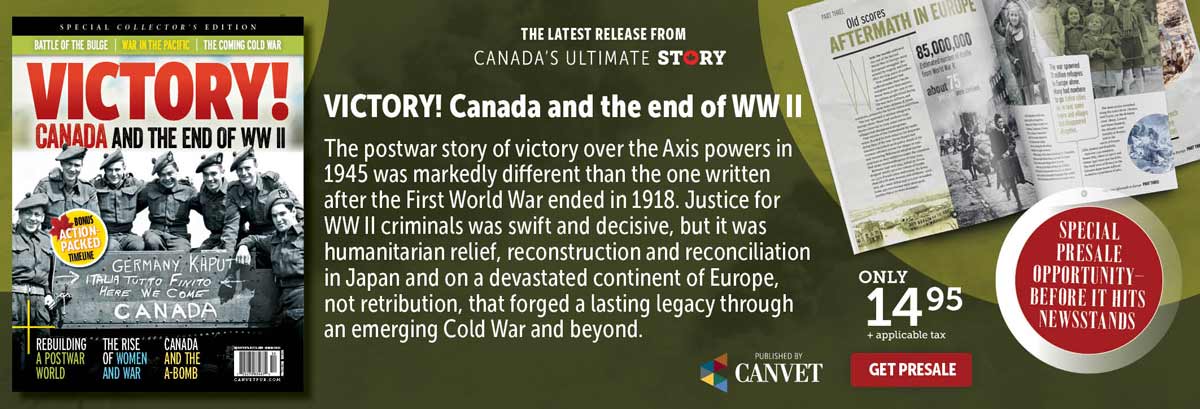Our quiz in the January/February issue of Legion Magazine concerned the Korean War. Here are the answers.
- In July 1950, Canada sent three Royal Canadian Navy destroyers and the Royal Canadian Air Force’s No. 426 Squadron, a transport unit that conducted trans-Pacific shipments of United Nations supplies.
- True. The Canadian government effectively recruited CASF troops off the street, in order to avoid weakening regular force units (whose primary role was to defend Canada) and the contentious issue of compulsory overseas service. CASF volunteers signed up for 18 months; some were Second World War veterans while others had been too young to fight in the last war. Officers were, however, largely from the regular army. In November 1950, the force became known as the 25th Canadian Infantry Brigade. .
- Rockingham was the first commander of the 25th Canadian Infantry Brigade. A Second World War veteran, Rockingham had resumed a civilian career with B.C. Electric in 1945. In August 1950, he was asked to lead the army brigade bound for Korea and did so until 1952.
- The 2nd Battalion, Princess Patricia’s Canadian Light Infantry (PPCLI), which arrived in Korea in December 1950. This PPCLI battalion, part of the larger 25th CIB, was the brigade’s only unit sent in late 1950 because at the time it appeared that the war was almost over.
- False. RCAF fighter units were maintained for home defence or were stationed in Europe, while some Canadian pilots served in United States Air Force F-86 Sabre jet units over Korea. Additionally, the Montreal-based company Canadair produced Sabres for the USAF during the war.
- Flight Lieutenant Joseph A.O. “Omer” Levesque. As a USAF Sabre pilot, Levesque shot down an enemy MiG-15 jet in March 1951. For his wartime efforts, among other awards, Levesque received the U.S. Air Medal and the U.S. Distinguished Flying Cross.
- The Presidential Unit Citation. The PPCLI were the first Canadians to receive this; they beat back the Chinese by calling artillery down on their own positions and through a stubborn, well-organized defence.
- Three each. In summer 1950, the Canadian Army’s three infantry regiments–the PPCLI, the Royal Canadian Regiment, and the Royal 22nd Regiment–were composed of one battalion each. With the CASF’s creation, an additional battalion was added to each regiment. Ultimately, third battalions were established, with each regiment’s battalions rotating in and out of the front lines.
- This characterization was due to the proliferation of patrols along the front lines from mid-1951 to the end of the war in 1953. In summer 1951, the UN and communist sides opened negotiations for an armistice, halting extensive ground offensives and stabilizing the front lines. Consequently, the war entered a lengthy phase of static warfare. For Canadian soldiers, nightly patrols were necessary to stop the constant North Korean and Chinese attempts to infiltrate and spy on their entrenched positions.
- Bottles of Canadian whisky. The Lee-Enfield Mark IV had a firing rate of one round for every 12 seconds, the rate this rifle had had since the First World War. It was therefore totally unsuitable to counter the constant waves of enemy troops that typically bore down on Canadian positions in Korea. Although it was technically illegal for them to have the M2, photos of Canadian soldiers carrying the carbine consistently show up in the war’s records.
Advertisement




















